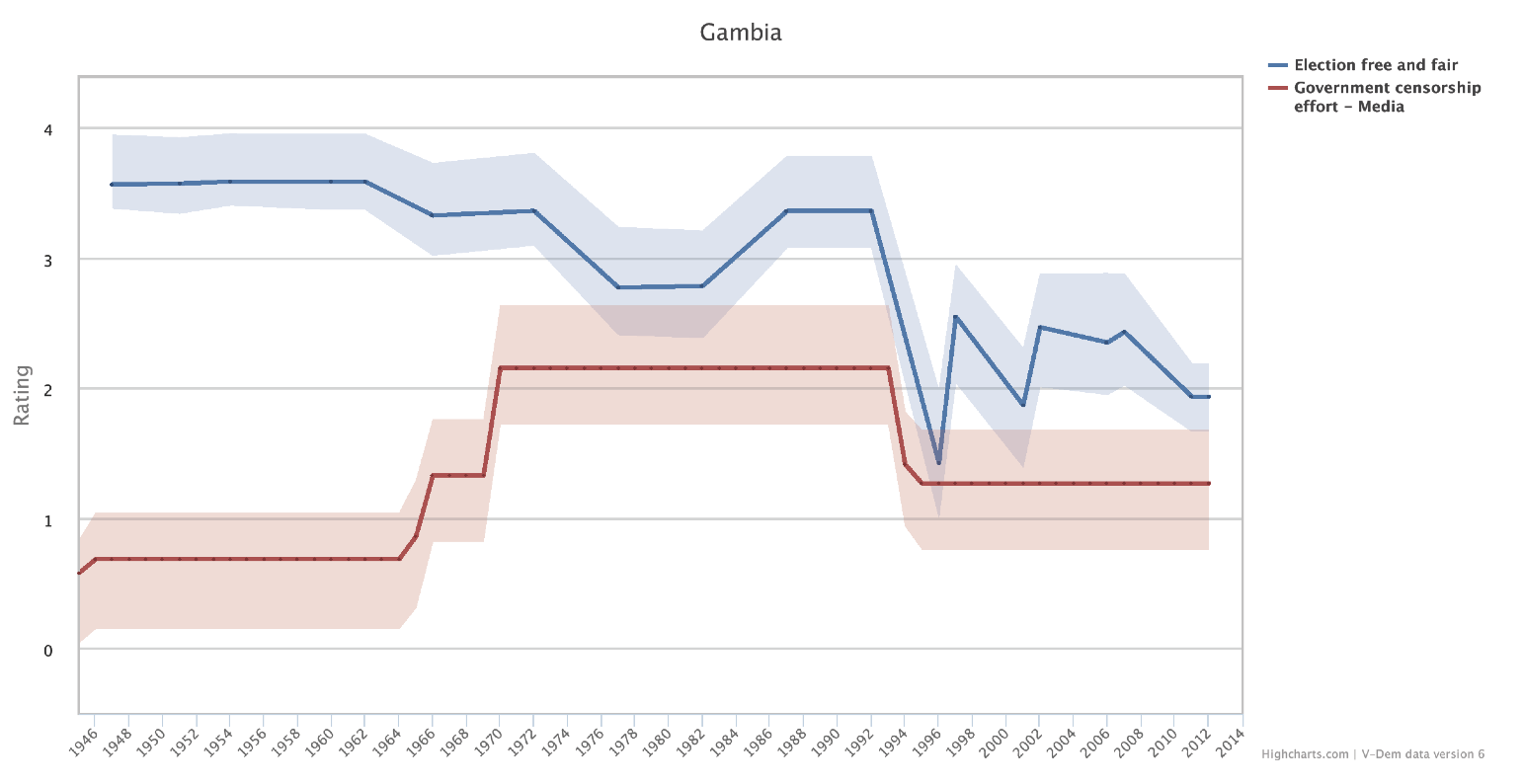Presidential Elections in Gambia
By: V-Dem Staff
Dec 13, 2016
What makes the defeat even more stunning is the widespread government control of the media and detentions of opposition activists that preceded the elections, as reported by Human Rights Watch and international media. On election day, international phone calls and the Internet were shut down, presumably in order to prevent the opposition from mobilizing voters; however, this did not seem to affect the election’s outcome. This week’s graph will take a look at media censorship and V-Dem’s free and fair elections variable in The Gambia.
Using the Country Graph Tool we can examine the variable measuring the extent of the government’s efforts to censor the media. A high value indicates that attempts to censor major media are rare and usually punished when discovered. In addition, we can take a look at the variable measuring the freedom and fairness of elections. Higher values indicate more free and fair elections. At the time of The Gambia’s first elections in 1947, elections were considered free and fair, though media censorship by the government was routine. Beginning in the mid-1960s, media censorship became less common. In the 1990s, censorship began to be applied more regularly, though not quite to the same extent as it had been in the 1940s and 1950s. The free and fair elections variable also dropped in the early 1960s and has since taken a downward trajectory, however with some fluctuations. How The Gambia progresses with regard to these issues will be possible to examine with future V-Dem updates.
Use the Online Analysis Tool on V-Dem.net to find out more about media censorship worldwide.


